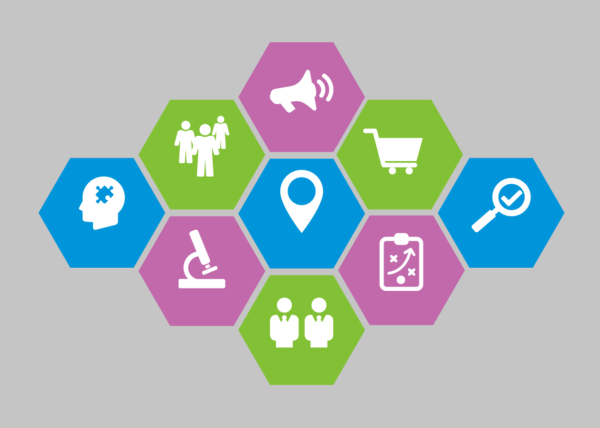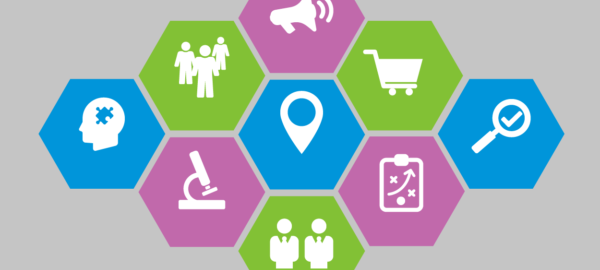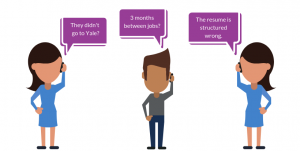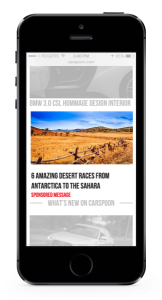— August 16, 2019

Segmentation is all about grouping people together based on shared traits, and it plays a critical role in helping a company better understand and respond to its customer base.
Companies often use segments to identify the needs of one customer group over another to help them figure out their target markets and refine their messaging. They use them to understand the differences between people that convert on their sites and those that don’t in order to identify tactics that will drive more engagement or conversions. They use them to deliver different experiences (website messaging, email copy, etc.) to different groups of people. And much more.
But how do you decide which segments to create and use in your organization? Some segments may immediately come to mind for you: you want to look at enterprise vs. small business prospects, shoppers from the US northeast vs. the west coast, customers with a checking account vs. a mortgage. But other times you’re not sure which segments to look at.
You could turn to predictive segmentation, which relies on machine learning to sift through all of your customer data to spot meaningful differences between groups of people. This process takes some of the guesswork out of segmentation and can help you spot patterns you may not think to look for.
But you should also leverage qualitative techniques that are based on interviewing or speaking directly with customers to give you direction on your segmentation strategy. In this blog post, I’ll describe how to get started with that type of qualitative segmentation.
How to Get Started with Qualitative Segmentation
The first step is to define your research goals. What question(s) are you trying to answer? Do you want to improve your messaging and identify which messages appeal to certain groups? Are you looking to understand the product needs of different customers? Are you hoping to understand communication preferences among different groups? Lay out your direction by identifying the questions you have.
Next, create groupings of the types of people you want to interview and why. Are you looking to speak with prospects, customers, or shoppers? Are they in your loyalty program or target customer email list? Consider these initial groupings to be the basis for your segmentation strategy.
For each of these groups, design an interview guide. Make sure there’s a reason behind every question you’re asking (apart from “that’s interesting”) so that you don’t waste anyone’s time. As a general rule of thumb, the questions you ask should be open-ended enough for your interviewees to share compelling stories about themselves. Here are a few question ideas:
- What are some key goals that you’re looking to achieve when you’re on our site or using our product?
- What are some pain points that you regularly face?
- What resources or information are you looking for?
- What are some ways that you’re using our product?
Once you have your interview guide in place, define your method for conducting interviews. Remote conversations are likely the most cost-effective and will give you access to a wider base of interviewees. In-person meetings will maximize the levels of human interaction in your conversation but are not always practical. In an ideal world, you’d use a mix of these qualitative research techniques. Regardless of your method, you’ll want to cover your bases with the following resources:
- A tool for recording your interviews (i.e. screen capture software, a webcam, your smartphone, an audio device)
- A means to transcribe your interviews into a shared document that you can analyze collaboratively with team members
- A notebook so that you can jot down your thoughts, especially for in-person meetings
How to Apply Qualitative Research to Your Segmentation and Personalization Strategy
Next, use what you’ve learned in your qualitative research to identify a few segments to pursue. Here are some specific steps that you can take:
1. Decide on your segments
Using the insights you’ve uncovered, decide on your key segments. What similarities in goals/pain points/needs/attitudes came through in your interviews? What natural groupings emerged?
Outline what’s important to each segment and what makes them unique. Indicate which aspects of your messaging are likely to appeal to them, which products or features are the most valuable to them, what channels they regularly use, etc.
2. Create your segments with data
Your segments won’t be much use to you if you can’t identify which people fall into which segment. So don’t forget to think through how to identify your segments within your data.
For example:
- If you’re targeting a segment of people who all share the same pain point, you can create a segment of website visitors who have all visited a webpage or viewed content addressing that pain point.
- If you’re targeting different industries or locations, you can identify visitors when they land on your site with reverse IP lookup.
- If you have any person-to-person interactions through a call center or salesperson, that person could manually select which segment the person falls into based on their conversations.
- If there’s no way to segment people with the data you have (like when you segment customers or shoppers based on their attitudes, hobbies, etc.), you could ask a short question of website visitors and segment them based on their answers.
At this stage, you should also validate your qualitative segments with quantitative data when you can. Once you’ve created segments in your personalization platform, see what size those segments are. If one segment is very small, consider whether the goal you have in mind for that segment is worth it. If your small segment is particularly high-value, it could be a good idea to keep an eye on that segment to identify what differentiates those customers from others. But if you want to design specific website experiences for a small segment of people, the level of effort may not be worth the impact (you may want to look into machine-learning algorithms to scalably deliver 1-to-1 experiences instead).
3. Put a plan in place for each segment
Next, decide how you plan to use the segments you created. Your research should have surfaced what’s important to each segment and how they differ from other groups. You can use that understanding to:
- Create more compelling content targeted to specific personas
- Draft different headlines or pick particular imagery for each segment to experience on your website
- Craft more compelling emails and send them to each segment
- Target more relevant digital advertising
- Deliver more effective onboarding experiences within your SaaS application or other logged-in experience
- Tailor promotions to different groups via email or on your website
Learn more about how to use segments in your personalization strategy in this blog post “What Is Customer Segmentation?”
4. Continuously analyze your segments
Now that you plan to regularly segment customers and prospects according to these new criteria, continue to analyze all the differences you can about those segments through data. Do they respond to the tailored messaging, promotions, etc.? Does their behavior tell you more about their needs/pain points than you learned in your interviews?
Use this new information to continue to refine and improve your segmentation strategy and campaign tactics.
Final Thoughts
If you’re not sure where to start with segmentation, talking directly to your customers and prospects is always a great place to begin. Use these tips on qualitative segmentation to help you identify different groups of people you should target in your marketing and customer success strategies.
Business & Finance Articles on Business 2 Community
(90)








